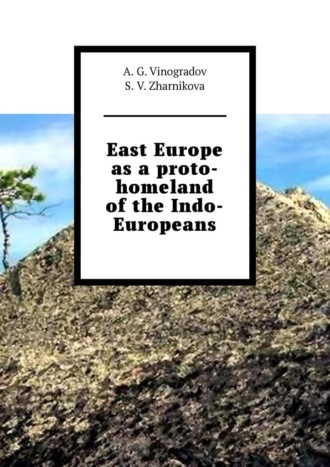
Полная версия
East Europe as a proto-homeland of the Indo-Europeans

East Europe as a proto-homeland of the Indo-Europeans
A. G. Vinogradov
S. V. Zharnikova
Editor Алексей Германович Виноградов
Illustrator Алексей Германович Виноградов
Translator Алексей Германович Виноградов
© A. G. Vinogradov, 2025
© S. V. Zharnikova, 2025
© Алексей Германович Виноградов, illustrations, 2025
© Алексей Германович Виноградов, translation, 2025
ISBN 978-5-0065-5092-6
Created with Ridero smart publishing system
Introduction
In the modern world, the urgency of the problems of the ethnic history of the peoples of various regions of our planet is obvious. The growth of ethnic self-awareness, which has been observed everywhere in recent decades, is accompanied by an increase in interest in the historical past of peoples, in the transformations that each of them experienced in the course of its millennia-old formation. It became a spiritual need for a representative of a modern urbanized society to find the roots of his ethnic existence, to understand the diverse processes that led to the formation of that ethnocultural environment through which he perceives the world around him.
Since the origin and historical existence of the overwhelming majority of the peoples of our planet was associated with numerous migrations, movements to new habitats, causing changes in a number of cultural factors both among the alien people and the indigenous population, today, studying the ethnic history and culture of their people, we, of course, study them in the process of historical transformations and mutual influences of many tribes and peoples, which to one degree or another took part in their formation. Regional ethno-historical research in our time is becoming especially acute, since it is knowledge of the history of one’s own people that helps a modern person to free himself from the narrowness of the nationalist view of the world, to understand the role and significance of the contribution to the common treasury of human culture of all peoples, to realize that humanity is one.
Of course, it is impossible to solve the most difficult issues of ethnic history today without involving data from the most diverse fields of science. It is necessary to combine the efforts of ethnographers, historians, archeologists, linguists, folklorists, anthropologists, art historians, as well as paleobotanists, paleozoologists, paleoclimatologists and geomorphologists, since the development and formation of peoples took place in certain climatic zones, in certain landscapes, with a certain flora and fauna, and this must be taken into account.
Viktor von Hen responded very interestingly in 1890 about Russian culture: «Russia is a country of eternal change and completely non-conservative, and a country of ultra-conservative customs, where historical times live, and does not 2 part with rituals and representations, no matter how related. The modern culture here is an external gloss, it develops in a wave-like fashion, generates disgusting phenomena; what the Ancient Tradition has preserved with regard to goods, customs, tools, etc., has been invented solidly, rationally, wisely and skillfully used… They are not a young people, but an old one – like the Chinese. All their mistakes are not youthful flaws, but arise from asthenic exhaustion. They are very old, ancient, conservatively preserved all the oldest and do not refuse it. By their language, their superstition, their disposition, etc. you can study the most ancient times.» (Victor Hen, biography. 1894)
Chapter 1 Localization of the Indo-European ancestral home
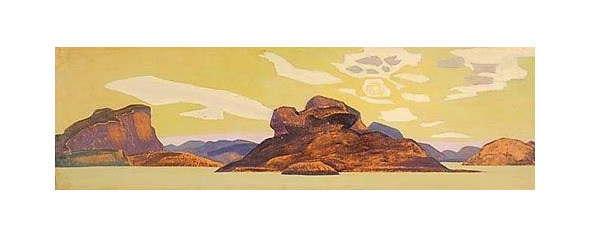
N. K. Roerich. Karelian landscape
Among the numerous options for the location of the most ancient Indo-European ancestral home already in the 19th century. O. Spiegel proposed the territory of Eastern Europe between 45 and 69° N It was he who first pointed out the obligatory presence of a mountainous landscape on the Indo-European ancestral homeland, noting the insignificant height of these mountains, since rye and wheat were sown on them, the names of which are in the Indo-European parent language.»
On the territory of Eastern Europe there are not so few elevations, especially in its northern part – Valdai, mountains of the Kola Peninsula and Karelia, Northern Uvals, mountain formations of the Arkhangelsk region, Komi, etc.
Returning to the idea of O. Spiegel that the Indo-European ancestral homeland was located in Eastern Europe between 45 and 69° N, we again repeat that it was here, in the era of the Holocene climatic optimum, identical to the end of the common Indo-European period, that there were mountain landscapes with insignificant heights, where there were excellent and optimal opportunities for growing rye, barley, oats, wheat – cereals, whose names are recorded in the common Indo-European parent language. N. D. Andreev relates the time of the appearance and beginning of the independent evolution of the Early Indo-European Proto-language to the time of transition from the Upper Paleolithic to the Mesolithic and the period of the Early Mesolithic, 10—8 thousand BC.
Already at this early stage in common Indo-European language there are terms denoting rye, grain, grain, flax, barley, wheat, winnow, etc. Archeology has data that suggest that the rudiments of agriculture appeared (in the form of gathering and processing cereals) even 30—40 millennia ago in the era of the Young Sheksna interstadial, as evidenced by the numerous finds of stone pesto sources in Eastern Europe. It can be assumed that the wild ancestors of cereals such as rye, barley, oats, wheat and the most ancient Indo-European fiber-flax, being plants of long daylight hours, should have been initially spread exactly where there were the most favorable conditions for their natural existence.
So, in spring, long daylight plants need at least 14—16 hours of light for germination, and at least 16—18 hours for growth and development. But here it is appropriate to recall that, starting from 7th etc. and until the middle of 1 thousand 4 BC the climate of Eastern Europe was much warmer than modern, and spring came in the north 30—40 days earlier. With such a shift, the southern border of the range of these plants was 58—64° N.
L. S. Berg also noted that long-daylight cereals need long-term sunlight for earning, and in the north and east they have «relatively more favorable conditions than in the south and west… In the north, the absence of overheating is positive for plants from direct rays of the sun and a significant amount of scattered light.» And the huge amount of scattered light received by the territories of the East European North is evidenced by the following data cited by L. S. Berg:" Here (at 68° N) ultraviolet rays, contribute to the formation of vitamin, almost twice as much as under the 47—54° N, the intensity of ultraviolet radiation is much greater than in the middle latitudes».
Once again, the Eastern European localization of the Indo-European ancestral home was proposed in the middle of our century by A. Scherer, who believed that the areas occupied by the Indo-Europeans should border the area of the Pra-Ugrians, and after the collapse of the Indo-European community, the territory of Eastern Europe for a long time remained the habitat of various Indo-European tribes: Germans, and the Italians occupied the north and northwest; Balto-Slavs-northeast, and protogreek – southeast.
And finally, many researchers, starting in the 19th century and up to now, it was considered possible to connect the common Indo-European ancestral homeland with Northern or Northeastern Europe on the basis of the continuous development of the anthropological type, the fact that a fair-haired and light-eyed population predominates here, because on the basis of the oldest Indo-European monument – the Rigveda, historical arias were light Hair and blue-eyed.

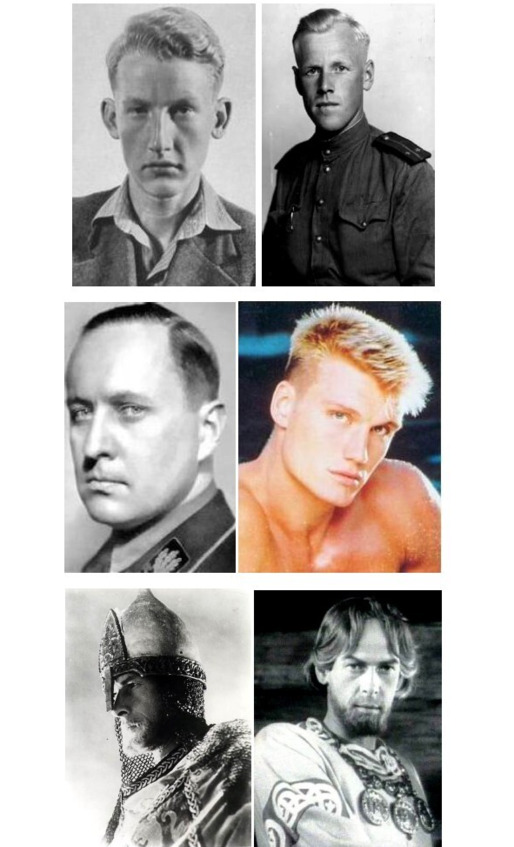
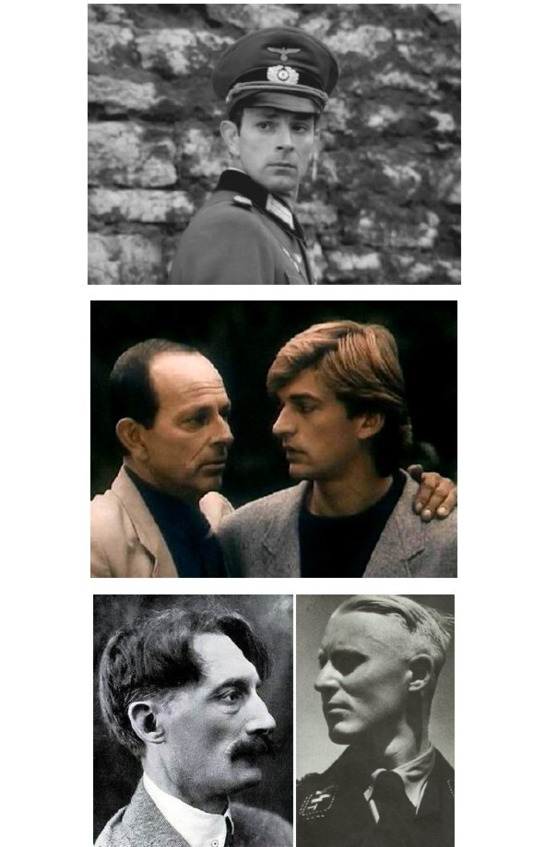
Nordic type
One of the oldest sources, based on which the researchers considered it possible to suggest the North-East European localization of the Indo-European ancestral home, is the Rig Veda – ritual texts, the design of which most scholars attribute to the second half or middle of 2 thousand BC T. Ya. Elizarenkova believes that many features of this monument indicate the presence of a long preceding period of poetic activity. An outstanding researcher of the late 19th and early 20th centuries. B. Tilak correlated the time of creation of the most ancient hymns of the Rig Veda with the Arctic ancestral home of the Aryans and dated them to 6—4 thousand BC, pan-Indo-European period.
The monument to the ancient Iranians «Avesta» is very close to the Rigveda, which most experts date back to the 7th-6th centuries BC, although T. Barrow proposes to postpone the dating until the 11th century BC.
As T. Ya. Elizarenkova notes, the Rigveda and the Avesta are closest in language to each other «primarily in their most ancient parts (the „family“ mandalas of the Rigveda, the gates of the Avesta). The similarity is so great that sometimes both texts look like two variants of one archetext, differing only in different rules of sound correspondence.»
Chapter 2 Polar day and northern lights
And finally, the basis for the northern localization of the ancestral homeland of the Aryans are the texts of the ancient Indian epos «Mahabharata», which were brought together as a number of researchers, in the 10—5th century BC, but retained a huge amount of very ancient realities. It is no accident that the Mahabharata is called the fifth Veda (in addition to the four main ones: the Rigveda, Samaveda, Yajurveda and Atharva Veda). In Mahabharata, as in the ancient hymns of the Rig Veda, there are a large number of northern or Arctic realities, the analysis and systematization of which allowed B. Tilak in his 1903 work «The Arctic Homeland in the Vedas» to conclude that the oldest ancestral home of the Aryans was not far from the Arctic Circle. In Russia in 1910, E. Jelachich’s book «The Far North as the Homeland of Humanity» was published, where B. Tilak’s ideas were supported and developed.
On what were B. Tilak and E. Jelachich based on their conviction that the Aryan homeland should be sought in northern Europe, not far from the Arctic Circle. These are numerous excerpts from the texts of the Rigveda, Avesta and Mahabharata, which could only be explained by the «northern» hypothesis of their origin. Such, for example: «the great god Indra – a mighty warrior – a thunderer divided his power between heaven and earth, putting them on an invisible axis, like two wheels. And since then the stars have circled the earth in circles, and this axis has been strengthened in the sky by the Polar Star (Dhruva – indestructible, unshakable), which is also called «the best of the stars in the sky.»
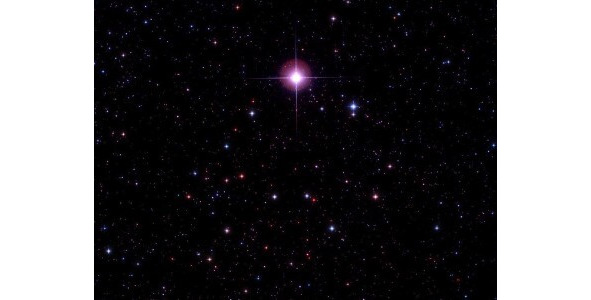
Polar Star
The famous researcher and translator of the texts of the epic of the Mahabharat B. L. Smirnov noted that the stars listed in Mahabharat are the stars of the ancestral home of the Aryans – these are stars or constellations of «high northern latitudes.» He writes: «The text, having accurately described these constellations, as the nearest stars to the North or the North Star, already directly calls it, as the fixed star with which Brahma began building the world or according to the figurative expression of the text, here he» descended to the victim. «The ancient Aryans understood the whole process of creation, as the sacrifice of the Spirit, which is both the donor and the sacrifice. Further messages of the text that the constellations closest to the Polar Star describe circles whose center is the Polar Star are of great historical interest in resolving the issue of the Aryan homeland.
The belt of non-passing constellations is definitely indicated: Ursa Major, Cassiopeia and even located at even lower degrees of northern latitude: constellations Bootes and, possibly, Perseus. These constellations do not go beyond the horizon, that is, they describe a circle that can be traced almost all over one night, especially in winter only in countries located no further than about 55—56 north. w. The text speaks of the dangers of Arctic travel and directly indicates: as soon as a person penetrates further north, he dies.
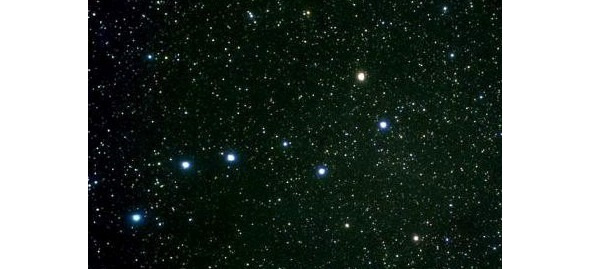
Ursa Major constellation

Constellation Cassiopeia
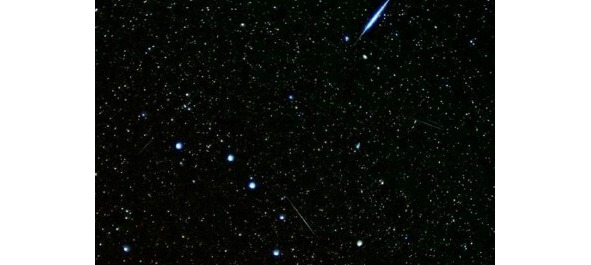
Constellation Bootes
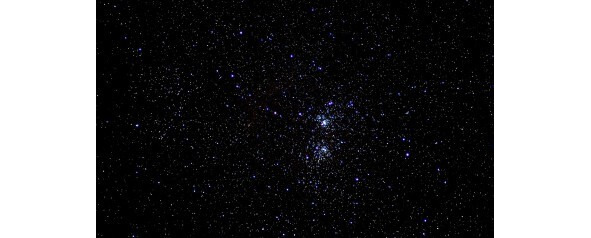
Perseus constellation
In the hymns of the Rigveda, Avesta and Mahabharat it is said that in the homeland of the Aryans it lasts six months day and six months – night, and «the divine day-night (day) is the year, it is also divided into two parts: night is the way – (sun) to the south, day is the way to the north.» B. L. Smirnov noted that only those who are well known in these countries could say that the sun rises in the north for half a year. He believed that: «This is a very important evidence of the ancient Iranians becoming acquainted with the polar countries, which are called the Golden Country or the Beautiful Flower. Naturally, life away from the North Pole could not give rise to the idea of a long polar night and of the day, lasting six months.
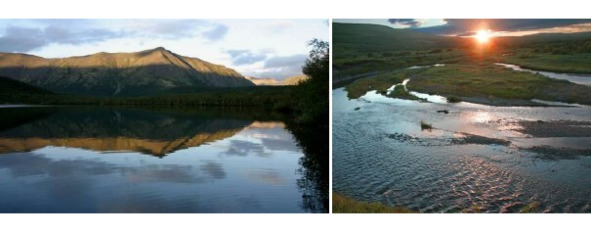
Polar night in summer. Kola Peninsula

Polar night in summer. Urals
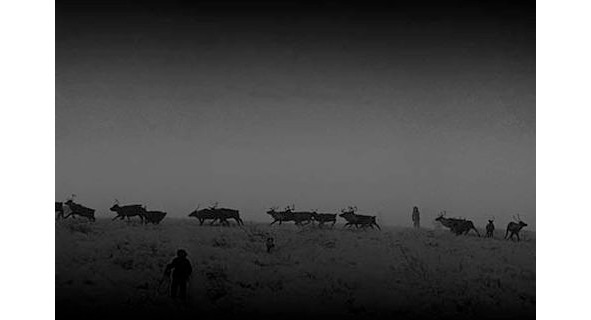
Polar day in winter
How could people living far from the north sing the dawn with these words:
«1. Here came the light of light, the best of all
A bright harbinger was born, (spreading far).
How (herself) she is brought to life by the prompting of Savitar. (of the sun)
So the night gave way to Ushas. (Dawn)
8. She follows the crowd of past (dawn),
The first of the coming in a continuous series,
Brightly blazing, Ushas raises (all living things)
But never arouses the dead.
11. Gone are those that have seen
As the older Ushas ignites
This is to us now she appeared firsthand
They go too; who will see her in future times.
12. Disgusting hostility, keeping the law, born in the law, Supportive, summoning rich gifts.
An omen that invites the gods:
Here, Ushas, light up today, O best!
14. She flashed with ornaments, on the threshold of heaven.
The goddess took off her black outfit.
Awakening (all creatures), on scarlet horses
The goddess arrives in a chariot
In which it is easy to harness the horses.
15. Bringing the coveted gifts that give prosperity,
She raises a bright banner, making herself felt.
The last of the past in a continuous succession!
The first of the brightly sparkling, shone Ushas.
16. Get up! Living life spirit found on us.
The darkness has gone away, the light is approaching.
She cleared the way for the sun to move.
We have come (there), where they extend the life span.» (RV. I.113).
Or: «I. From the dark (space) has risen
noble huge – (goddess)
Caring for a human settlement.
6. Flaming lights rose.
The coveted blessings hidden in the darkness —
Sparkling dawns make them visible. (R.V. I.123).
4. Like a fly waking the sleeping,
She came first of all who came,
Continuously changing.
6. Here she shows herself, the very first of many.
9. Let these new morning dawns now, as before
Wealth and good days will shine upon us.» (RVI.124).
Turning to the goddess Dawn, the ancient Rigveda hymn singers constantly emphasized those new continuous dawns had come, foreshadowing the coming of the sun. Anthems read:»
I. When the morning light comes on…
6. We have reached the other side of this darkness.» (RVI.184).
They chant «All mornings, when continuous dawns were lit» (PB. I.171), and they say:
«In truth, it has been many days,
During which until sunrise
You, oh dawn, were visible to us!
Many dawns did not enlighten to the end.
Oh, give, Varuna, we shall dawn to the light of day.»
Here, the singer of the ancient Aryan anthem turns to the powerful lord of the heavenly ocean, the keeper of cosmic law and truth on earth God Varuna with a request to help survive the long thirty-day dawn and survive until the day. He is asking:
«Oh give us a long, dark night,
See your end, oh night!»
It is interesting that in the Vedas and in the Avesta, memories of the polar night, which lasts no more than 100 days a year, have been preserved. So in the Indian service there is a rite of reinforcing the warrior god and thunder Indra with the ritual drunken drink «Soma» during his struggle to free the sun from captivity, which lasts one hundred days. In the Avesta, priests also reinforce the warrior-god, the liberator of the sun, one hundred nights; it must be shown that the legend of the struggle to free the sun from long captivity, the idea of which could be inspired only by a polar night, is one of the leading Vedic mythologies.
So about Indra it is said that he «gave birth to the sun, the sky, the morning dawn» (R.V.I.32); «revealed darkness with the morning dawn, the sun» (R.V.I.62); «revealed the luminary for the aria» (R.V.II.11); made so that «the earth became visible to the sky» (R.V.II.12); he «stretched out the light through both worlds! He overthrew the darkness.» (P.V.II.17); «found in the darkness a great luminary» (R.V. II.31).
Indra is called the «invader of the sun that begets days» (R.V. II.34), it is said that he «lit the morning dawn, the sun lit, wishing» (R.V. II.44), thanks to him «through the blind, wild darkness became visible» (R.V. IV.16).
And since the end of winter comes with the end of the polar night, the snow melts, all nature comes to life, the rivers that have dropped ice make noise, Indra is the liberator of the sun, also called the «liberator of waters», and that with the liberation of the sun, with its return to heaven water is liberated, many hymns of the Rigveda and Avesta say. So, for example, it is alleged that «Iidra with the help of light took water out of the darkness,» «water flowed by his will» (R.V. I.33), he killed a snake, the waters protected by which «stood constrained,» he did «swollen rivers» (R.V.I, 32; II. II). One of the hymns dedicated to Indra says:
«4. When through the songs the sun was found, beautiful in appearance, When they lit a great light early in the morning, the most courageous, in an effort to help husbands did,
What through the blind wild darkness it became possible to see.
7. He broke Vritra, which closed the water.
Earth, unanimous, supported your club.
So set in motion the streams directed to the sea. (R.V.V.16.693)».
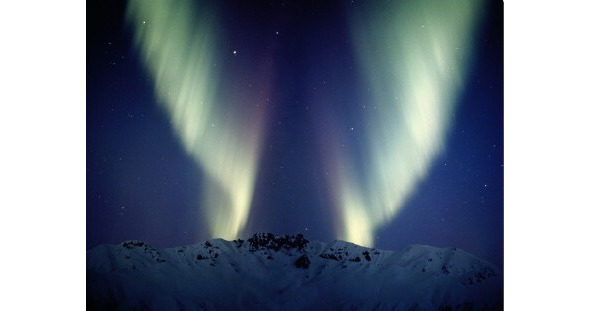
Northern Lights
In the most ancient Indian traditions, which B. Tilak and E. Jelacic paid attention to, there is a very vivid description of the aurora, which strikes with its realism and amazing accuracy. In one case, these are the sages (rishis) of Ekat, Dvat, Trita (First, Second, Third), who, in order to contemplate the Supreme Deity, go to the north of the Milk Sea, where there is a radiant Shvetadvipa (White Island) and there they «penetrate into the millennial, eternal god.» But they do not see him, because they were blinded by his radiance «similar to thousands of simultaneously flaming suns.» Blinded by this spectacle, the rishis heard spilling sounds.
In another, the Rishis of Narada (we note that the highest peak of the Subpolar Urals is called Naryad) also reached the great White Island and called on God, which appeared to him «visible in the universal sawn-off shotgun… as if like a month spiritually pure, and at the same time, as it were, quite different from a month, and as if refractory, and shine as if mentally flashing stars: like a rainbow of a wing of a parrot and as if crystal sparkling; like a blue-black smear, and like gold piles; the colors of the coral branch then, like a white gleam; here is golden-eyed, there is similar to beryl; like a blue sapphire, in places similar to smaragd; there are the colors of the peacock’s neck, in places similar to a pearl thread. So the eternal, holy, hundred-headed, thousand-headed, thousand-footed, thousand-headed, thousand-bellied, thousand-armed took so many different colors and images, and invisible in places,» and the space around rang.
For comparison, it makes sense to give a description of the aurora made in 1856—57 by the famous ethnographer S. V. Maximov: «was riveted to a wonderful, unprecedented spectacle, now opening from a dark cloud. It instantly burst and instantly shone with dazzling colors, a whole sea of flowers that poured from one to another and, as if sparks streamed endlessly from above, sparks from below, from the sides… Here it will pour over the whole roundabout with azure, green, purple, all the colors of a beautiful rainbow, here will play topazes, yachts, emeralds… You can’t understand anything, you can’t figure anything out for one whole impression – everything gets in the way and gets confused. Ripples in the eyes and it hurt. Let your eyes rest on the side, but there they meet the former darkness, framing a wonderful, unprecedented sight. Turns again to him, but already there appeared new species. As if a huge, omnipotent forge was launched: and you just do not see workers, you do not hear hammers beyond range, myopia.
You see one huge bugle, sparks running in it and all this burns with such a bright light that you hardly have to see in another of the wonderful spectacles of a wonderful nature, except for the northern lights, live at least thirty, fifty years. So I thought at that time and involuntarily went to memory unconsciously learned in childhood, now with a visual comparison, the striking poems of Lomonosov, who was familiar with the beauty of the phenomena of the polar sky in early youth:
«His face hides the day,
Fields covered dark night
A black shadow ascended the mountains,
The rays bent away from us
An abyss has opened, the stars are full:
There is no number to the stars, the bottom to the abyss.
Dawn is raising from the midnight countries:
Doesn’t the sun put his throne there?
Does not the ice float the sea fire?
This cold flame has covered us
Xie entered into the night upon earth!
Oh you fast sight
Piercing the book of eternal rights,
Say you are so troubled
What a bright night ray will fall:
What is the thin flame in the firmament smashed?
Like lightning without formidable clouds
Seeks from the earth to the zenith?
How can it be that frozen steam
In the middle of winter a fire started?
There argues greasy haze with water
Or the sun’s rays shine
Leaning through the air towards us is thick;
Or the fat mountains the tops burn
Ile in the sea blowing marshmallow
And smooth waves hit the air?»
Surprisingly close are these descriptions, separated by millennia, especially if we recall that the ode to M. V. Lomonosov is called «Evening Reflection on God’s Majesty in the Case of the Great Northern Lights» and ends with the words:



